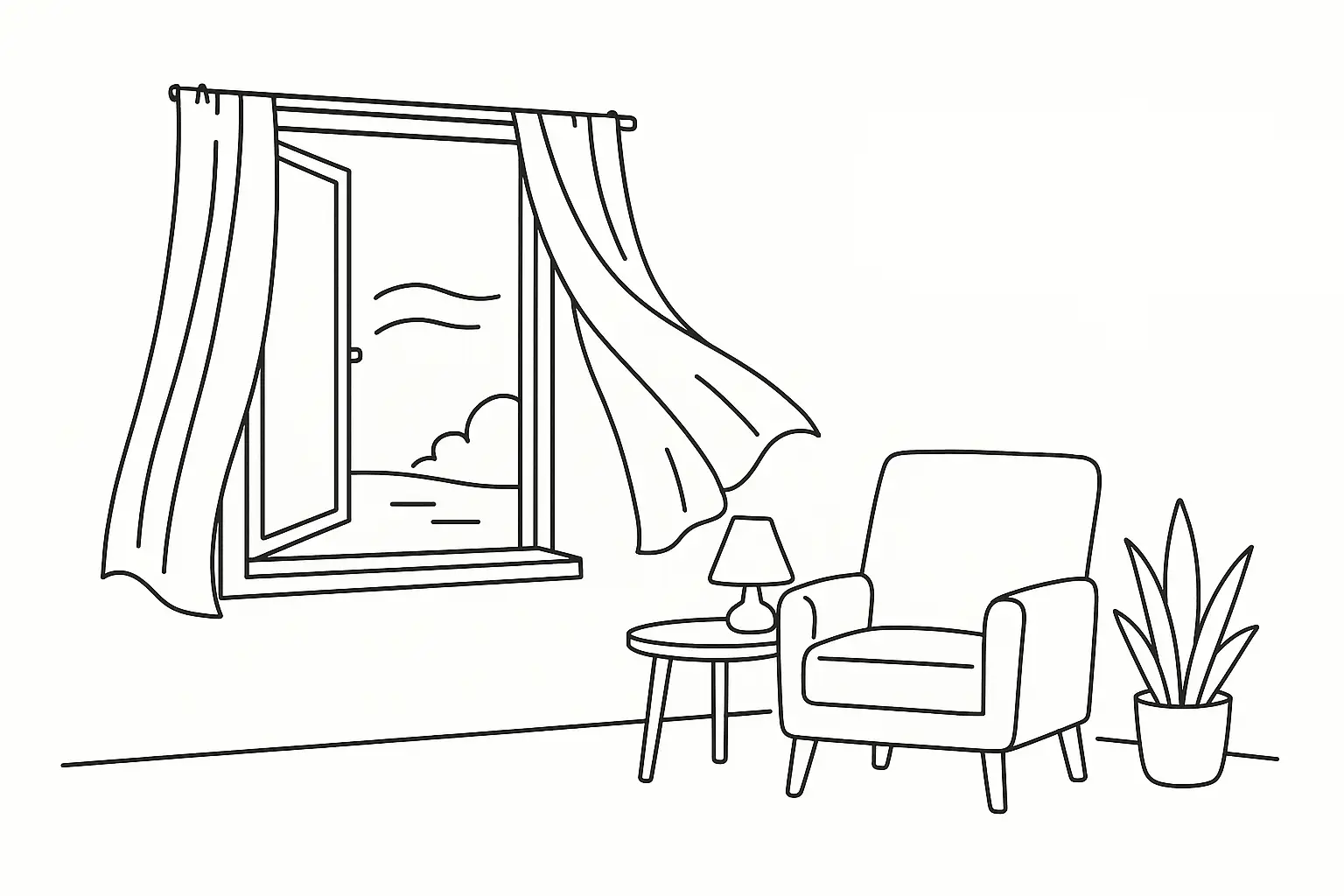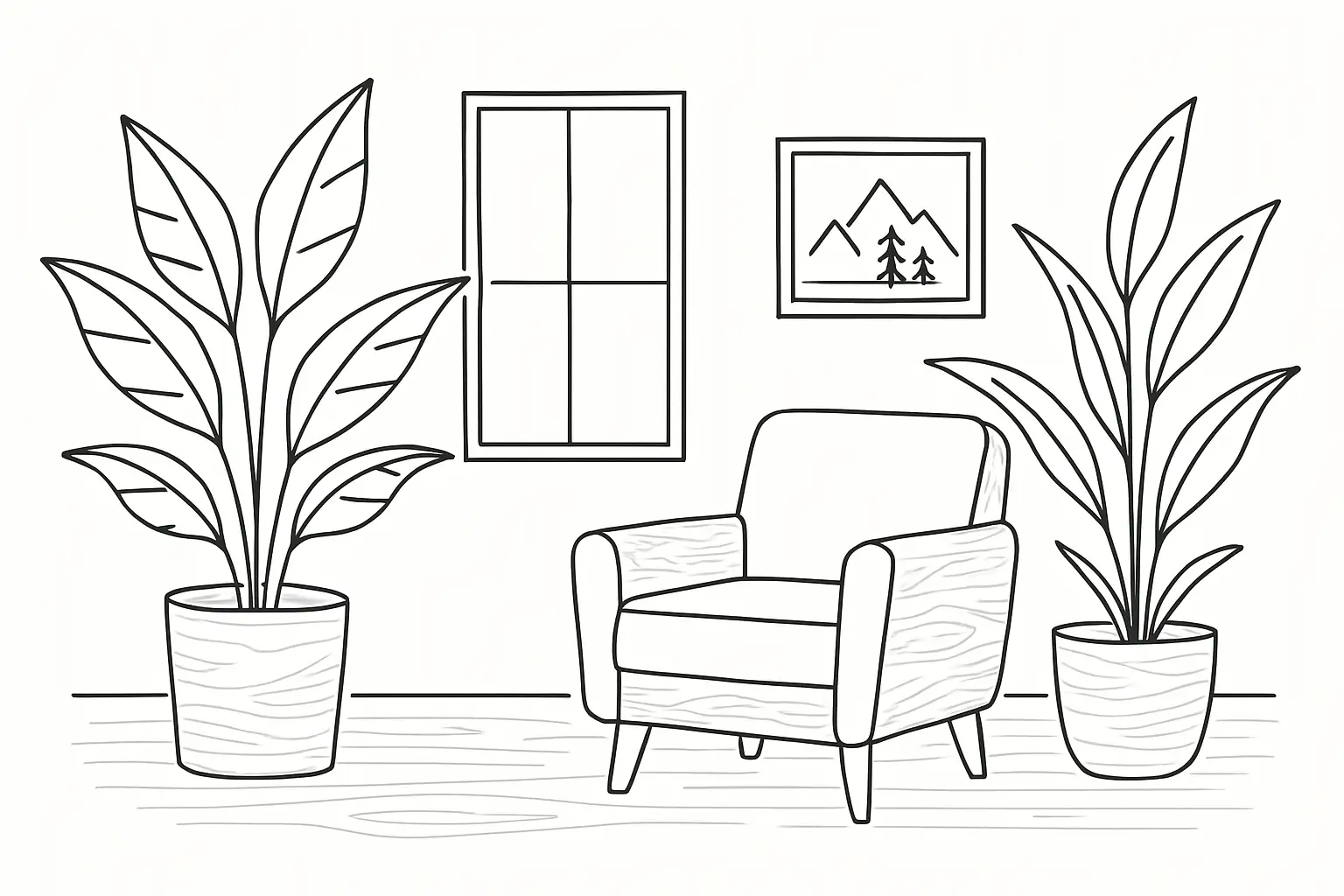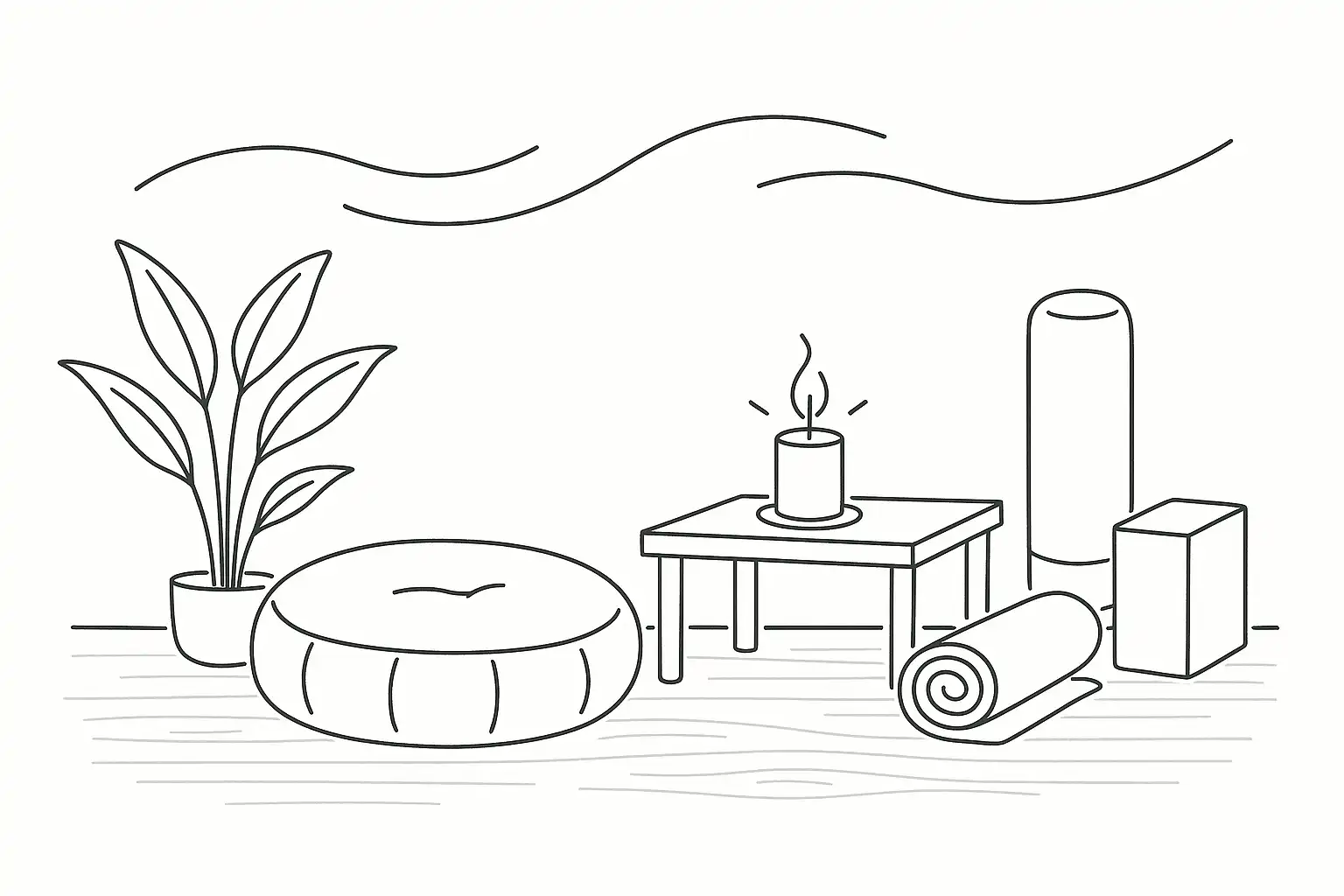Have you ever felt that your home is decorated beautifully, but it does not feel right? If so, home wellness design might be your answer. Home wellness design is not just about how beautiful your home looks; it is about creating a space that supports your body, mind, and emotions every day.
In this post, we will introduce some great home wellness design ideas and guide you toward turning your home into a place where you feel well.
Table of Contents
What Is Home Wellness Design and Why It Matters

Home wellness design is not just about how beautiful a home is. It is about how you feel at home. Homes should be the place of safety and comfort, a place that calms you after a busy day of modern life.
Our environment affects us much more than we think. The light, the air circulation, the colors on the walls, and the position of windows all have a say in how we feel. A poor design can make you feel anxious, while a well-thought-out home wellness design can make you feel relaxed.
In short, home wellness design combines aesthetics with sustainability and function, and helps you create balance between body, mind, and environment.
Benefits of Circadian Lighting Systems
Our bodies follow a natural 24-hour rhythm called the circadian cycle. Naturally, the sun regulates this rhythm. But indoor environments can interfere with this cycle since we may not get enough natural light during the day, or we may get a lot of artificial light during the night.
When this circle is disrupted, you may have problems sleeping at night, feel tired during the day, and even face health issues over time.
Circadian lighting systems are a system of smart LEDs designed to mimic the sunlight patterns. For example, the morning light is bluish, telling your body it is the type to get up and start your day, while the afternoon light is more orange, preparing your body for night rest.
Window Placement and Cross Ventilation Tips
Getting fresh air has a great impact on your health. Poor ventilation can trap pollutants indoors. So it is very important to have an efficient ventilation system. Windows can do the work for you if positioned correctly. Here are some ideas:
- Position windows on opposite or adjacent walls to allow airflow across a room.
- Put one window higher than the other.
- Position windows in opposite corners if possible.
- Place main windows toward the usual direction of wind for natural air flow.
- Two smaller windows can be more effective than a single large window. They will allow air circulation.
- Keep interior doors open during the day to help air circulation.
- Pair windows with ceiling fans for improved air flow.
Biophilic Design: Bringing Nature Indoors

Think of the great feeling you have when you go on a camping trip or walk in the neighborhood park, how refreshing it is. Well, NIH’s research shows that interacting with natural elements reduces stress, lowers blood pressure, and increases creativity. That is why we feel instantly calmer around greenery, natural textures, and sunlight.
Biophilic design is about bringing this calming effect indoors. Simple changes like adding some plants or choosing natural materials such as wood or stone can alter the mood of the room and bring the magical effect of nature into your home.
Here are some tips toward a biophilic design:
- Add house plants to your living room, kitchen, or any other room that you spend much time in.
- Choose natural textiles such as cotton or wool for the curtains.
- Add wooden furniture or use wood or stone finishes in the decoration.
- Consider having a tabletop fountain to have the calming sound of water.
- Even indirect forms can work. For example, hanging a picture of nature can bring calmness.
Best Indoor Plants for Air Quality
Indoor plants are a good idea for multiple reasons. They add beauty, they bring the calming effect of nature indoors, and they improve air quality. NASA’s research shows that certain plants can absorb pollutants like formaldehyde, benzene, and trichloroethylene, while also releasing oxygen.
Here are some favorite options for indoor plants that elevate air quality:
- Snake plant: Or sanseveria releases oxygen at night. So you can keep them in the bedroom. They are also very low-maintenance and a great choice if you are new to plants.
- Spider plant: This is also a low-maintenance plant and a great choice for beginners. It helps reduce carbon monoxide indoors.
- Peace lily: This plant absorbs common VOCs, thus can enhance air quality.
- Aloe vera: Also a low-maintenance plant that improves air quality. Also provides gel for skin care.
Using Natural Textures (Wood, Stone, Linen)
Synthetic surfaces may look sleek or modern, but they also feel cold or impersonal. Using natural materials in interior design is an important part of biophilic design and can alter the mood of the room completely.
Here are some materials and ideas on how to use them:
- Wood: You can use wood for flooring, furniture, exposed beams, or floating shelves.
- Stone: You can use stone for the kitchen counter, bathroom walls, or simply add some decorative stone objects.
- Linen and cotton: Use these fabrics for curtains, cushions, or bedding.
- Wool and jute: These materials are great options for rugs.
Creating a Meditation Room or Mental Wellness Corner

Having a wellness space has such a great impact that it makes it necessary to have such a space in your home. You do not have to allocate a whole room; even a small corner or a window seat can serve as your mental recharge zone.
The goal is to create a calm, clutter-free area that you can use for mindfulness, relaxation, meditation, or even journaling, reading, or having a break.
Here are some points to consider when creating your mental wellness space:
- Choose a quiet spot that is away from the main household traffic.
- Do not forget the light. Soft lighting, such as floor lamps, candles, or salt lamps, can transform the space.
- Keep the space simple and minimal. It should be a clutter-free space without distractions. Just add a few meaningful objects.
- Add a floor cushion, yoga mat, or comfortable chair.
- Consider calming scents with essential oils or incense.
- Consider adding plants, artworks, or inspirational text to personalize the space more.
Soundproofing Ideas for a Relaxing Space
Noises are among the biggest distractions when you want to relax, especially if you have a busy household or live in urban areas. So you may need to soundproof your relaxing space.
Using acoustic panels is the best way to soundproof a room. But it can be costly, or you cannot dedicate an entire room to your relaxing space. In this case, the following ideas can help:
- Use heavy curtains to absorb outside noise.
- Consider rugs for the floor to reduce the noise of footsteps and echoes.
- Use bookshelves. You can have your favorite books for more personalization of the space, while they work as sound barriers.
- Seal gaps around windows to reduce outside noise.
Soft Lighting and Calming Decor Elements
Do not undermine the role of proper lighting in creating a relaxing space. Soft lighting creates a cozy, relaxing atmosphere. Here are a few ideas to soften lighting:
- Instead of focusing on one or two bright lights, go for multiple, less bright lights.
- Change white lights with warm-toned bulbs.
- Consider floor lamps, table lamps, and wall sconces.
- Add dimmer switches. This way, you have more flexibility to adjust the light to your mood.
- Consider candles or lanterns for soft glows.
- Consider colors such as earthy neutrals or greens for a more relaxing vibe.
Designing Bedrooms for Better Sleep and Physical Health

You spend most of your resting time in the bedroom. So, for the sake of your well-being, you should design the bedroom carefully. Proper design elevates your sleep quality, and quality sleep improves your immunity, mood, and overall health.
There are multiple optimizations you can consider to redesign your bedroom, from the minimalist design, colors, plants, and proper lighting, to the quality of pillows and mattress. For example, an ergonomic pillow can prevent neck pain, while non-toxic materials reduce chemical exposure.
Here are some tips you can follow:
- Consider a supportive mattress and breathable natural bedding.
- Keep the room dark at night. You can use thick curtains or sleep masks.
- Use circadian-friendly in the evenings.
- Consider adding calming colors such as soft blues or grays.
- Make sure of proper air circulation.
Ergonomic and Multi-Functional Spaces for Daily Living
You may need space for various activities at home, such as work, exercise, family life, and relaxation. But you may not have enough space to dedicate to each one. In this case, you can consider multi-functional designs to ensure your spaces meet these needs.
This approach is especially helpful in smaller homes. The guest room can be the yoga room at the same time, or your dining area can also be your work zone.
Here are a few tips to create ergonomic and multi-functional spaces:
- Consider adjustable desks and chairs so that you can use your space both for working and dining.
- Use a dimmer switch or add an extra lamp so you can switch the lighting between reading, working, and relaxing.
- Consider flexible furniture such as foldable tables, modular sofas, or storage ottomans.
- Create different zones in an open space. For example, dedicate one area to work and another to relaxation.
Safe and Non-Toxic Materials for a Healthier Home
Wellness design is not just about how the design looks or feels. Pay attention to the materials you choose. Many household materials release volatile organic compounds (VOCs) and other toxins that affect air quality. So, choosing safer materials is an effective way to design a healthier home.
Here are some better choices to consider:
- When painting the walls or furniture, make sure to choose low-VOC or VOC-free paints and finishes.
- Solid wood furniture is a much safer option than particleboard with chemical adhesives.
- Choose natural fiber rugs, such as wool, over synthetic ones that can release chemical particles.
- Beeswax or soy candles are much safer than paraffin candles.
- Plastic containers can release toxic materials. Use glass, ceramic, or stainless steel instead.
Smart Home Features That Support Health and Relaxation
Home wellness design is about connecting to nature; that’s a fact. But smart home systems now offer features designed for comfort, safety, and relaxation.
Here are some wellness-friendly smart features you can consider:
- Consider adding smart thermostats for quality sleep. They maintain optimal temperature during your sleep.
- Air quality monitors and purifiers are a great idea for urban homes. They can detect and filter pollutants and increase air quality.
- Circadian smart lighting systems can shift colors automatically to match natural daylight patterns and help you get a good sleep. Smart light switches are a decent option too.
- You can use smart speakers or apps that can guide you for meditation or tell sleep stories.
Remember that advanced technology is meant to simplify your life and support your wellness; it is not supposed to add distraction.
This content is generated by AI, reviewed by our editorial team, and features products that have been thoroughly evaluated and chosen.





